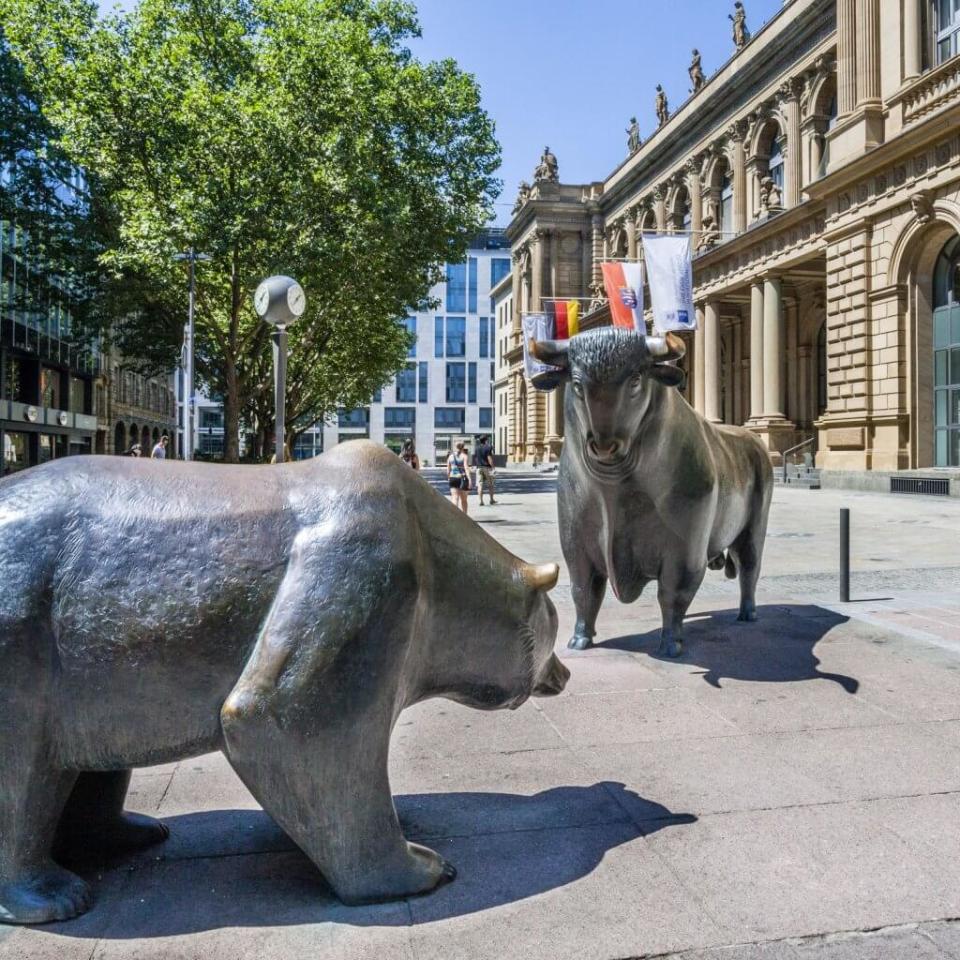Will there be a bear market in 2022?

When 2021 comes to its finale, it will be remembered as a solid year for stocks that represented more of a bull than a bear market.
The benchmark S&P 500 had more than doubled (+24%) its average annual total return of 11% over the 40 years.
But for cryptocurrencies, things were more than solid – they’ve been phenomenal.
Since the beginning of the year, the aggregate value of digital currencies rose by 176% to $2.14tn.
New possibilities regarding decentralised finance (DeFi), non-fungible tokens (NFTs), and the enormous potential for blockchain-based gaming in the metaverse, boosted investor confidence but also sent cryptocurrencies to the undreamt heights (just look at the rise of the meme-coin Shiba Inu of more than 45,000,000% year-to-year).
However, there are certain fears that the upcoming year may not treat cryptos as nice.
There are a few reasons that could lead to a crypto bear market in 2022.
FED’s Policy
The FED finally admitted that the inflation wasn’t only ‘transitory’ and indirectly announced the possibility for multiple interest rate raises next year.
Mario Gatara, an analyst from market intelligence company Analogika, told Coin Rivet: “Now that FED finally got over the ‘transitory’ sticker for the inflation, accelerating the QE taper, multiple interest rate raises are clearly on the cards for the next year.
“No surprises there, which explains the most recent bout of optimism on Wall Street.
“However, with Jerome Powell touting central bank monetary policy as data-dependent, the guessing game continues – monetary policy should remain the dominant issue for the stock market performance, keeping stocks at the mercy of the Federal Reserve.
“Needless to say, things could get ugly in case of a prolonged period of higher inflation.”
He further explained that the crypto universe looks like an obvious beneficiary but, despite the historically low correlation with the stock market, during the last few months, Bitcoin exhibited a starkly different behaviour – that could lead to a bear market.
“Notoriously volatile, the crypto bellwether led the rest of the coins into a risk-on/risk-off mode, in tandem with stocks, suffering a sharp sell-off, and languishing far off the all-time-high, along with a handful of (recently very popular) meme stocks,” he said.
“It could be a sign of a reduced risk appetite from retail investors, while a protracted stagnation could cool off fresh demand and even further dampen the momentum desperately needed to keep the crypto assets attractive to newcomers.”
However, Gatara concluded, in case of a prolonged period of higher inflation – “things could become pretty rough”.
History of crypto market
History may suggest that the crypto market could mirror the bear market situation and that reversions coming after the upswings are nothing new.
Since the March 2020 bottom, the total value of all digital currencies has jumped more than 14-fold to $2.14tn.
This is somewhat similar to the 35-fold increase in total market value over roughly 10 months between March 2017 and January 2018.
However, following the January 2018 spike, the aggregate value of all cryptocurrencies would go on to decline by just shy of 90% over the subsequent 11 months.
Blockchain distrust – Catch 22
While blockchain is exciting, it is still new and not widely adopted yet.
Businesses are still reluctant to just jump at the chance to support large-scale projects until there’s practical evidence of its effectiveness.
Yet, the whole thing cannot be proved until businesses welcome blockchain with open arms.
It’s quite the riddle/Catch-22 that could postpone the rally and cause bear market rules for some time.
Margin debt
Margin describes the amount of money, investors are borrowing with interest to buy or short-sell securities.
In some instances, investors using margins to leverage their trades can boost their returns.
But if the securities being purchased on margin don’t move how they expected in the short term, the brokerages will want investors to invest more money as collateral or could even force the sale of assets – also known as a margin call.
FOMO
Some argue that ‘fear of missing out’ (FOMO) moves could suck the life out of the cryptocurrency market in 2022.
The most famous meme coins all share one key trait – lack of anything resembling a competitive advantage.
For example, Shiba Inu may be one of the most-searched digital currencies this year, but social-media hysteria doesn’t necessarily mean it will have long-term potential.
In short, nothing regarding Shiba Inu (or Dogecoin and Floki Inu, for that matter) guarantees it’ll be the payment coin of choice by businesses in the constantly growing sector of blockchain projects.
